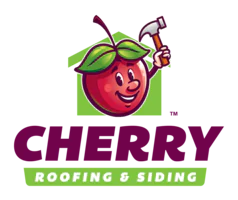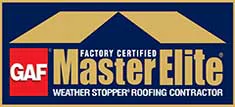Posted in:
At a time of environmental extremes, considering eco-friendly solutions like a green roof is a good idea.
With a renewed focus on sustainable practices to benefit the planet, the popularity of green infrastructure is on the rise. While the concept may seem innovative, integrating natural elements into architecture has been a practice for decades.

What Is Green Roofing?
A green roof, also known as a roof garden, living roof, vegetative roof, or eco-roof, involves installing a layer of vegetation on a traditional residential roof or commercial roof.
The components utilized usually include a deck structure, waterproofing, a root barrier, a drainage layer, a water retention system, soil, and various plants like moss, grass, flowers, and trees.
Green roofs serve as supportive ecosystems that offer natural air and water filtration, sustain plant life through rainfall, and manage rainwater that would otherwise require drainage or treatment systems to avoid possible damage to the roof itself or other parts of the building.
Benefits of Green Roofing
Most people will agree that green roofs add a beautiful touch to any building, but aside from being visually attractive, they also offer a wide range of benefits.
Improved Air Quality
Green roofs act as natural air filtration systems where they are effectively utilized, reducing greenhouse gas emissions and air pollution, thus enhancing local air quality. These environment-friendly spaces can lower carbon, nitrous oxide, sulfur dioxide, and ozone rates.
Enhanced Energy Efficiency
By providing insulation, green roofs reduce energy consumption, leading to potential cost savings on energy bills. According to the EPA (US Environmental Protection Agency), the temperature in a dwelling with a green roof can be 30-40°F lower than in one with a conventional roof, which helps with cooling. It also works the other way around, helping with heating.
Stormwater Management
One big issue in heavily asphalt-laden cities is what to do with excessive rainwater. Because of the presence of nonporous surfaces such as pavement and rooftops, a typical city block generates a lot more runoff than an equivalent woodland area. Green roofs absorb and manage stormwater runoff, reducing the strain on drainage systems and preventing excessive water accumulation.
Extended Roof Life
Green roofs protect structures from degradation, and other natural elements, potentially doubling the lifespan of roofs when compared to traditional options. This can make up for higher installation and maintenance costs.
Provides Natural Habitat
These roofs create a natural habitat for birds and insects, promoting biodiversity in urban areas and attracting wildlife. In this way, they help beautify areas even more than just through their natural attractiveness.
Lower Urban Temperatures
Green roofs mitigate urban heat by offering shading and cooling, helping to reduce high temperatures in cities.
Reduced Noise Pollution
Everyone knows that cities tend to be very noisy. The soil and plants on green roofs can absorb and reduce noise pollution, creating a quieter environment compared to traditional roofs.
Can Increase Quality of Life
Green roofs transform urban spaces into peaceful retreats and social gathering spaces, providing an increased quality of life thanks to the calming aspects of nature.
Types of Green Roofs
Once you decide that a green roof is the right choice for your property, you will have to choose from a wide range of possibilities. However, green roofs can generally be categorized into three main types: extensive, intensive, and semi-intensive.
Extensive Green Roofs
Extensive green roofs are lightweight and low-maintenance roofs with a thin layer of vegetation, such as sedum or grasses. They are designed to be self-sustaining, requiring minimal irrigation and upkeep. Extensive green roofs are a top choice for commercial buildings and provide environmental benefits such as improved insulation, reduced stormwater runoff, and increased biodiversity.
Intensive Green Roofs
Intensive green roofs are more complex than extensive ones. They feature a thicker layer of soil, allowing for a wider variety of plants, trees, and even recreational spaces. These roofs require more maintenance, irrigation, and structural support compared to extensive green roofs.
Green roofs can offer additional benefits such as enhanced aesthetics, increased biodiversity, improved air quality, and additional usable space for activities like gardening or social gatherings. Intensive green roofs are commonly found on residential, commercial, or institutional buildings where the roof is accessible and can support the extra weight needed to incorporate them into the dwelling.
Semi-Intensive Green Roofs
Semi-intensive green roofs can be categorized between extensive and intensive green roofs in terms of soil depth, plant variety, and maintenance requirements. They usually feature a moderate amount of soil depth, allowing for a mix of vegetation that includes a combination of low-maintenance plants like sedum and grasses, as well as some larger plants or shrubs depending on preferences.
Offering a balance between aesthetic appeal, biodiversity, and ease of maintenance, semi-intensive green roofs are a popular choice for a wide variety of buildings, including commercial, residential, and institutional structures.
How Much Does Green Roofing Cost?
Since a green roof will cover your building with plenty of vegetation, it will be most beneficial to you if you love gardening and do not mind the maintenance associated with it. Of course, when considering either a green roof or a traditional one, the price is always a main concern.
A green roof will cost you between $10 and $25 per square foot to install. While this can be more expensive than a traditional roof, this is often seen as a wise investment since these roofs usually last 30 to 50 years.
Something else to take into account when considering green roofing is that it will require extra structural support for weight and water. This means that this type of roofing might not be the right choice for every building. However, if the building in question has the required structural support, the benefits are outstanding.
Invest in a Green Roof
At first glance, a green roof might seem too expensive to some, but once all the benefits these roofs provide are considered, the choice becomes more obvious. Invest in a green roof now and your building will not just have a beautiful roof but also one that will last much longer than a traditional one. Contact us today to get started!
Jul 26, 2024







